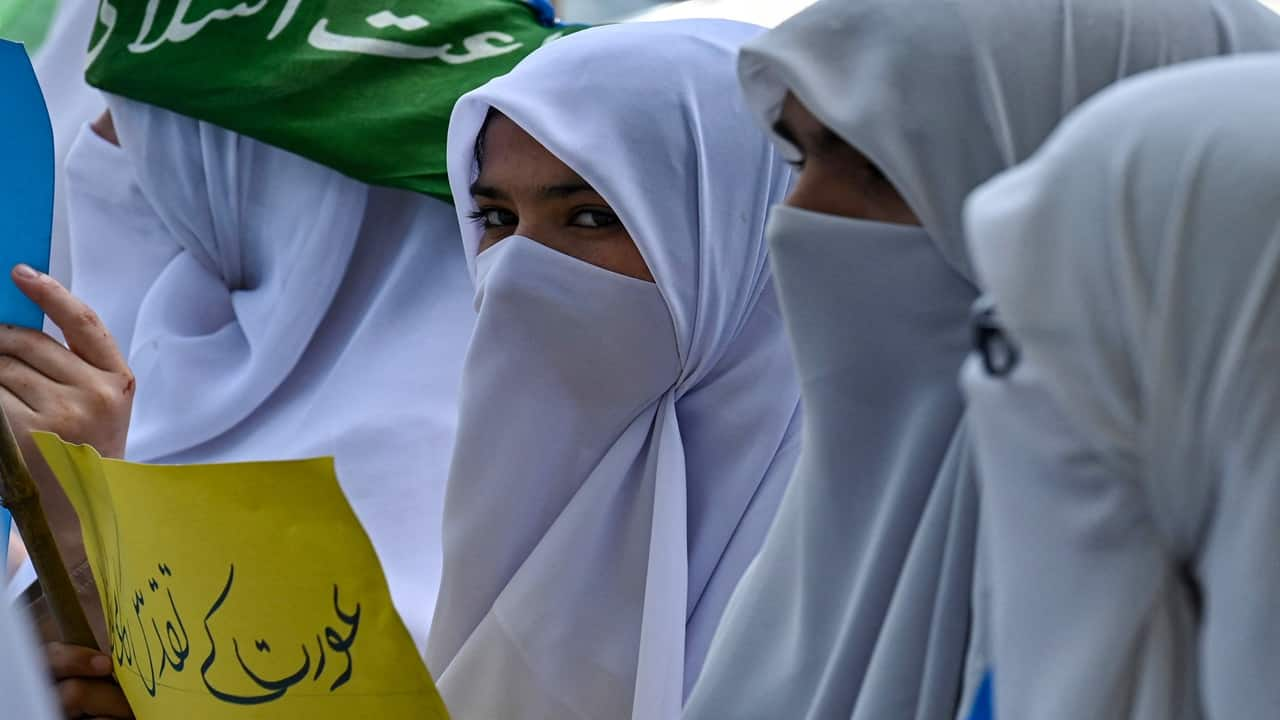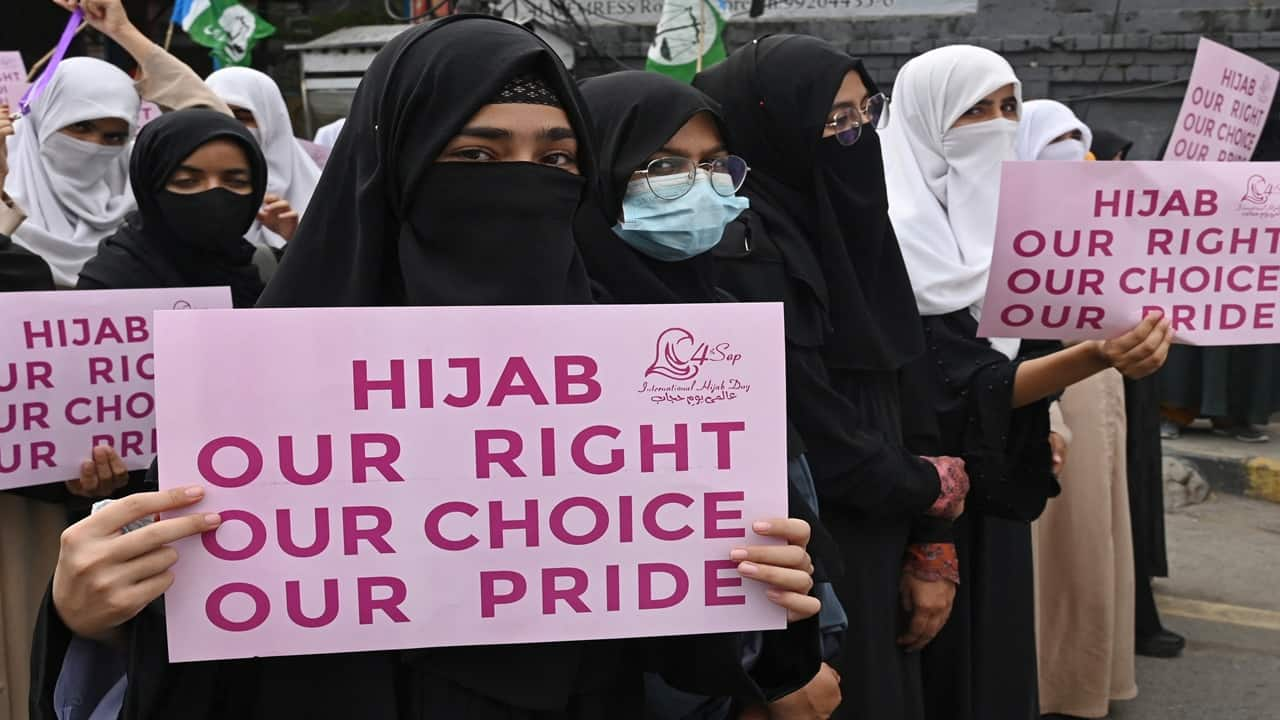



Kazakhstan has become the latest country in Central Asia to impose a public ban on face-covering garments, with President Kassym-Jomart Tokayev on Monday signing a law that prohibits clothing that “interferes with facial recognition” in public spaces.
While the law does not explicitly name religious attire, it is widely understood to target garments such as the niqab. Exemptions will, however, be made for medical needs, adverse weather, and certain cultural or sporting events.
Tokayev has defended the move as a cultural statement, urging Kazakhs to embrace traditional clothing rather than what he termed “face-concealing black robes.”
“It’s much better to wear clothes in the national style,” he had said earlier this year, describing the legislation as part of an effort to reaffirm Kazakhstan’s ethnic and cultural identity.
It should be mentioned that the hijab was previously prohibited in schools in 2017 in Kazakhstan, a predominantly Muslim nation with an official secular policy. Later, in 2023, it broadened the prohibition to include educators.
More than 150 girls reportedly refused to go to school in protest of the policy, which sparked protests across the country.
The latest ban places Kazakhstan alongside other Central Asian countries that have imposed similar restrictions amid concerns over rising religious conservatism and extremism.
The global debate over face-covering veils, such as the burqa, niqab, and hijab, continues to remain deeply polarised, reflecting broader tensions around personal freedom, security concerns, religious rights, and political narratives.
What is the Burqa?
The burqa is a traditional Islamic garment worn by some Muslim women that covers the entire body, including the head and face. The eyes are typically covered with a mesh or netting that allows limited visibility while keeping the face completely concealed. The burqa is designed to be loose-fitting, obscuring the wearer’s figure to align with specific interpretations of modesty in Islam.

How is the Niqab different?
The niqab is often mistaken for the burqa, but there is a distinct difference. While the niqab also covers the face, it leaves the eyes exposed. It is typically worn with a separate headscarf or abaya that covers the rest of the body. The key distinction lies in the visibility of the eyes.

What about the Hijab?
The hijab refers to a headscarf that covers the hair, neck, and sometimes the shoulders, but not the face. It is the most commonly worn form of Islamic dress around the world and is seen by many as a symbol of modesty and identity.

Early this January, a law banning the niqab took effect in Kyrgyzstan, with fines of 20,000 Kyrgyz Som (approximately $230) for violators.
The country’s top Islamic body, the Spiritual Administration of Muslims of Kyrgyzstan, had publicly expressed support for this, citing public safety and cultural incompatibility. “The niqab is alien to our society,” it had remarked, warning that full facial coverings could conceal individuals with malicious intent.
President Sadyr Japarov had defended the move by arguing that the burqa has no historical roots in Kyrgyz culture and stressed its importance for national security.
Moving further west to Uzbekistan, a ban on face coverings has been in place, with violators facing fines of over $250. According to the government, such garments run counter to its secular constitution and pose a challenge to national integration.
In a similar move, Tajikistan, under President Emomali Rakhmon, also enacted a ban in 2023 on clothing “alien to national culture,” which includes Islamic veils like the niqab. The government had long promoted a strict secular identity and discouraged public displays of conservative Islamic dress.
Beyond Central Asia, Sri Lanka, in South Asia, enacted a similar ban on face coverings in April 2021, following the 2019 Easter Sunday terrorist attacks that claimed the lives over 250 people. The Sri Lankan government cited national security as the key reason for outlawing garments like the burqa and niqab, with then-Cabinet spokesperson Keheliya Rambukwella stating it was “a necessary step.”
These policy shifts have, meanwhile, prompted scrutiny under international human rights law.
Article 18 of the International Covenant on Civil and Political Rights (ICCPR) guarantees the freedom of religion and belief, including the right to wear religious attire. The UN Human Rights Committee has affirmed that religious expression may include “customs such as the wearing of distinctive clothing or head coverings.”
International law, nevertheless, also allows for limited restrictions on religious freedoms when justified by national security, public safety, or public order.
Bans on face-covering garments have been sparking intense debate worldwide.
Opponents of these prohibitions contend that they violate people's rights, especially women's right to dress however they please. They see the laws as discriminatory, frequently pointing out that they exacerbate Islamophobia and disproportionately target Muslim communities.

On the other hand, proponents of the prohibitions argue that face-covering veils can compromise security by making it harder to identify people. They occasionally cite extremist organisations that use burqas or similar clothing as cover for suicide bombings and other types of attacks. Concerns regarding gender equality and autonomy are raised by advocates who also point out situations in which women are coerced or even forced to wear these clothes.
Discover the latest Business News, Sensex, and Nifty updates. Obtain Personal Finance insights, tax queries, and expert opinions on Moneycontrol or download the Moneycontrol App to stay updated!
Find the best of Al News in one place, specially curated for you every weekend.
Stay on top of the latest tech trends and biggest startup news.